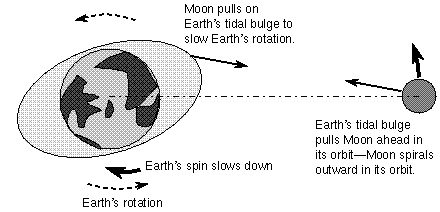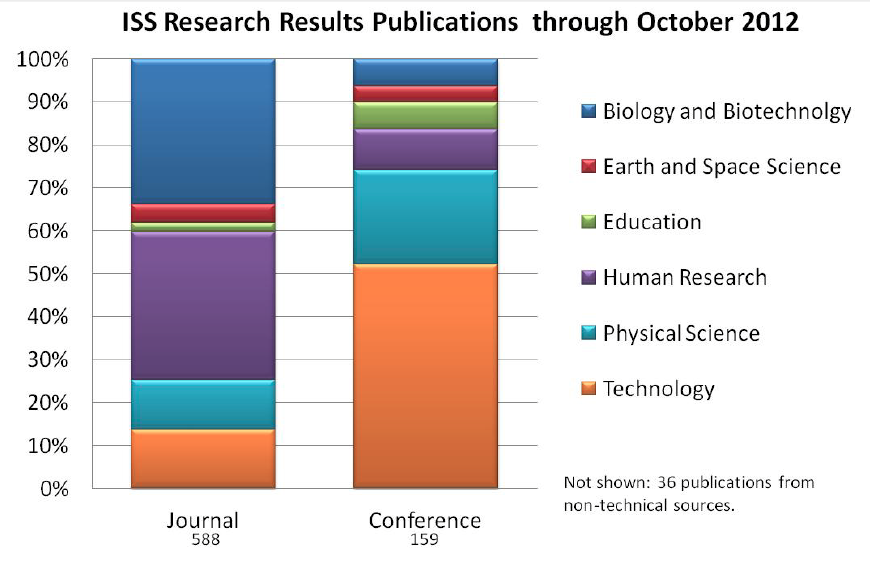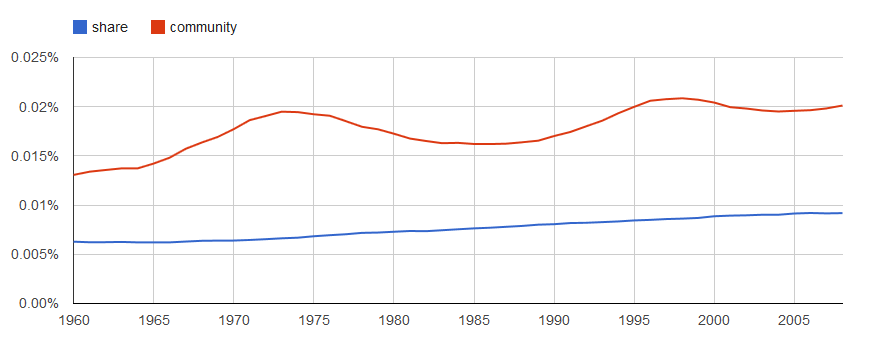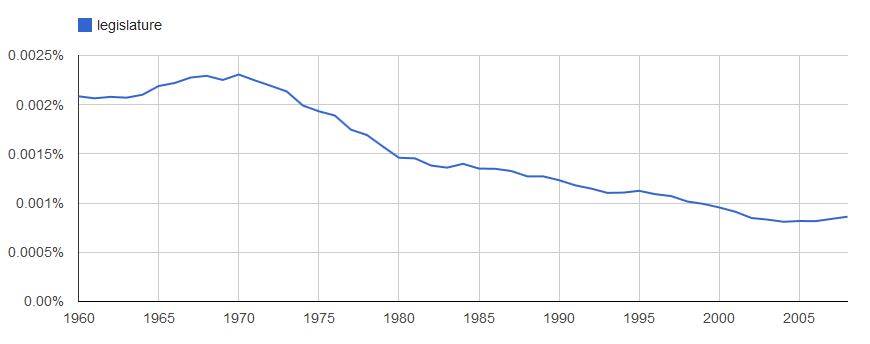[This starts with some old stuff, well-known to astronomers. A bit of new stuff at the end.]
As everyone knows (except Galileo, who famously got this badly wrong), the Moon causes the tides. The tides, in turn, have an effect on the Moon, causing its orbital radius to gradually increase. This is, incidentally, a good reason not to miss a chance to see a total solar eclipse like the one that’ll be visible from North America in 2017. Once the Moon gets a bit further away, there won’t be any more total eclipses. I don’t know how many more we have to go, but I know it’s a finite number.
The mechanism goes like this. The Moon’s gravity raises tidal bulges in the oceans. As the Earth rotates, those tidal bulges get ahead of the Moon’s position. The off-center bulges exert a forward force on the Moon, increasing its energy and driving it into a higher orbit:

(Picture lifted from here, but where they got it from I don’t know.)
In addition to pushing the Moon into a higher orbit, this also causes the Earth’s rotation to slow down, making the days get gradually longer. To be precise, the Moon’s orbit is getting bigger at a rate of about 4 centimeters per year, and the days are getting longer by about 17 microseconds per year.
Those may not sound like much, but over time they add up. For instance, this is responsible for the fact that we have to introduce leap seconds every so often. When the second was standardized, people tried to make it consistent with the length of the day. But since the early 20th century, the day has gotten longer by a couple of milliseconds. That means that time as measured in seconds drifts with respect to time measured in days. If you let this go on long enough without doing anything, eventually noon would be at night. The master timekeepers have decided they don’t like that idea, so every time things get out of sync by a second (which happens every year or two), they introduce a leap second to bring the clocks back in line.
Here’s another cool consequence of this stuff. A couple of thousand years ago, the days were several seconds shorter than they are now. So an average day over the past 2000 years was about a second shorter than today. If you add up one second per day over the course of 2000 years, you get 2000 x 365 seconds, which is about a week (give or take).
Based on our knowledge of solar system dynamics, we can calculate exactly when a certain event such as eclipses should have taken place. To be precise, we can calculate how many seconds ago the event took place. If you use that to figure out the date on which the event took place, and you don’t take into account the fact that the Earth has been slowing down, you’ll get an answer that’s off by up to a week or so. Sure enough, if you look up the dates of eclipses in ancient Chinese records, the results only make sense if you take account of the Earth’s slowing rotation.
You might not think there’s any way to tell whether days were a couple of seconds longer in ancient times than today, but by letting that tiny difference accumulate over enough years, you can.
That’s all old news. Here’s something new. According to an article in New Scientist, there’s a puzzle about the rate at which the Moon is receding from the Earth:
The moon’s gravity creates a daily cycle of low and high tides. This dissipates energy between the two bodies, slowing Earth’s spin on its axis and causing the moon’s orbit to expand at a rate of about 3.8 centimetres per year. If that rate has always been the same, the moon should be 1.5 billion years old, yet some lunar rocks are 4.5 billion years old.
I can’t make the numbers work out here. 3.8 cm/year times 1.5 billion years is 57 000 km. The Moon is about 380 000 km away. How do we know the Moon didn’t start out more than 57 000 km closer than it is now?
You wouldn’t expect the rate to be constant anyway. My naive guess would have been that, back when the Moon was closer, it dissipated more energy than it does now, so the rate of change should have been greater. If there is an age problem of the sort New Scientist describes, then such an effect would exacerbate it.
According to the article, the solution to this puzzle may be that tides were weaker in the past. A new publication by Green and Huber claims, based on models of ocean dynamics, that tides dissipated considerably less energy 50 million years ago than they do today. That’d mean less Earth slowdown, and less Moon recession. According to New Scientist,
The key is the North Atlantic Ocean, which is now wide enough for water to slosh across once per 12-hour cycle, says Huber. Like a child sliding in a bathtub, that creates larger waves and very high tides, shoving the moon faster.
If I understand correctly, the idea is that we’re now in a time when a natural frequency of oscillation of the north Atlantic is about 12 hours. This is the same as the rate at which the Moon drives tides (there are two high tides a day). When you drive an oscillating system near one of its natural (resonant) frequencies, you get a big effect, as the makers of the Tacoma Narrows Bridge could tell you.
I guess that’s possible. The resonant frequencies certainly depend on the size of the “container,” and 50 million years ago is long enough that the sizes of oceans were significantly different. Maybe we’ve been moving into a time when the driving of tides by the Moon is near a resonance of the ocean.





